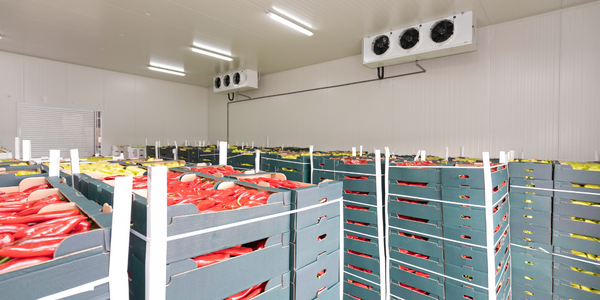Customer Company Size
Large Corporate
Region
- America
Country
- United States
Product
- Abaqus Unified Finite Element Analysis
- SIMULIA
Tech Stack
- Finite Element Analysis
- Computer Aided Engineering
Implementation Scale
- Pilot projects
Impact Metrics
- Innovation Output
- Productivity Improvements
Technology Category
- Analytics & Modeling - Digital Twin / Simulation
Applicable Industries
- National Security & Defense
- Transportation
Applicable Functions
- Product Research & Development
Use Cases
- Digital Twin
- Infrastructure Inspection
Services
- Software Design & Engineering Services
About The Customer
West Virginia University (WVU) is a public, land-grant, research university with its main campus in Morgantown, West Virginia. Its other campuses include those of the West Virginia University Institute of Technology in Beckley and Potomac State College of West Virginia University in Keyser; and a second clinical campus for the university's medical and dental schools at Charleston Area Medical Center in Charleston. WVU is organized into 14 colleges and schools offering 350 majors within 184 bachelor's, 109 master's, 66 doctoral, and two professional degree programs. WVU has produced 24 Rhodes Scholars, including former WVU president David C. Hardesty, Jr. The University also has produced 36 Goldwater Scholars, 22 Truman Scholars, and five members of USA Today's "All‑USA College Academic First Team."
The Challenge
West Virginia University (WVU) was tasked by U.S. Homeland Security to develop large inflatable plugs for use in emergency situations requiring the closing of vehicular tunnels or other large cylindrical structures. The challenge was that refining prototypes in a test facility was complex and time-intensive. The need for such a plug was driven by incidents such as the flooding of New York City’s subways during Hurricane Sandy, a truck fire in the Mont Blanc Tunnel, and the release of sarin gas in the Tokyo subway system. The idea was to set up inflatable structures, either permanently or temporarily, in multiple locations where an emergency was anticipated.
The Solution
WVU employed Abaqus Unified Finite Element Analysis (FEA) and CAE solutions from Dassault Systèmes’ SIMULIA to create realistic simulations of inflatable plug components and models of global plug behavior inside full-size tunnels. The simulations included folding, positioning, settling (from gravity), deploying, and inflating the plug, as well as the plug’s conformance to a tunnel and its adjustment against other objects typically found within a tunnel. The team’s Abaqus models covered a variety of components, the main ones being the inflatable plug and a tunnel segment. The WVU engineers based their simulations on the Uniform Pressure Method (UPM) because it is simple, computationally efficient, and adequate for modeling relatively slow inflation.
Operational Impact

Case Study missing?
Start adding your own!
Register with your work email and create a new case study profile for your business.
Related Case Studies.

Case Study
Airport SCADA Systems Improve Service Levels
Modern airports are one of the busiest environments on Earth and rely on process automation equipment to ensure service operators achieve their KPIs. Increasingly airport SCADA systems are being used to control all aspects of the operation and associated facilities. This is because unplanned system downtime can cost dearly, both in terms of reduced revenues and the associated loss of customer satisfaction due to inevitable travel inconvenience and disruption.

Case Study
IoT-based Fleet Intelligence Innovation
Speed to market is precious for DRVR, a rapidly growing start-up company. With a business model dependent on reliable mobile data, managers were spending their lives trying to negotiate data roaming deals with mobile network operators in different countries. And, even then, service quality was a constant concern.

Case Study
Digitize Railway with Deutsche Bahn
To reduce maintenance costs and delay-causing failures for Deutsche Bahn. They need manual measurements by a position measurement system based on custom-made MEMS sensor clusters, which allow autonomous and continuous monitoring with wireless data transmission and long battery. They were looking for data pre-processing solution in the sensor and machine learning algorithms in the cloud so as to detect critical wear.

Case Study
Cold Chain Transportation and Refrigerated Fleet Management System
1) Create a digital connected transportation solution to retrofit cold chain trailers with real-time tracking and controls. 2) Prevent multi-million dollar losses due to theft or spoilage. 3) Deliver a digital chain-of-custody solution for door to door load monitoring and security. 4) Provide a trusted multi-fleet solution in a single application with granular data and access controls.

Case Study
Vehicle Fleet Analytics
Organizations frequently implement a maintenance strategy for their fleets of vehicles using a combination of time and usage based maintenance schedules. While effective as a whole, time and usage based schedules do not take into account driving patterns, environmental factors, and sensors currently deployed within the vehicle measuring crank voltage, ignition voltage, and acceleration, all of which have a significant influence on the overall health of the vehicle.In a typical fleet, a large percentage of road calls are related to electrical failure, with battery failure being a common cause. Battery failures result in unmet service agreement levels and costly re-adjustment of scheduled to provide replacement vehicles. To reduce the impact of unplanned maintenance, the transportation logistics company was interested in a trial of C3 Vehicle Fleet Analytics.

Case Study
3M Gains Real-Time Insight with Cloud Solution
The company has a long track record of innovative technology solutions. For example, 3M helps its customers optimize parking operations by automating fee collection and other processes. To improve support for this rapidly expanding segment, 3M needed to automate its own data collection and reporting. The company had recently purchased the assets of parking, tolling, and automatic license plate reader businesses, and required better insight into these acquisitions. Chad Reed, Global Business Manager for 3M Parking Systems, says, “With thousands of installations across the world, we couldn’t keep track of our software and hardware deployments, which made it difficult to understand our market penetration.” 3M wanted a tracking application that sales staff could use to get real-time information about the type and location of 3M products in parking lots and garages. So that it could be used on-site with potential customers, the solution would have to provide access to data anytime, anywhere, and from an array of mobile devices. Jason Fox, Mobile Application Architect at 3M, upped the ante by volunteering to deliver the new app in one weekend. For Fox and his team, these requirements meant turning to the cloud instead of an on-premises datacenter. “My first thought was to go directly to the cloud because we needed to provide access not only to our salespeople, but to resellers who didn’t have access to our internal network,” says Fox. “The cloud just seemed like a logical choice.”



